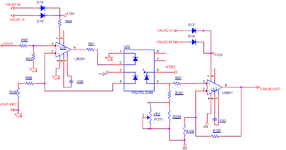Asilver
Newbie level 4
Hey there,
I am working on designing a modular power supply (AC-DC converter) having multiple DC outputs with isolated grounds with each other. I need to measure the voltages of each output and feed it to the micro controller such that ground remains isolated. I tried looking for some methods but all of them are for high voltages, my outputs are in the range of 5-36V DC.
Please suggest some solution for this.
I am working on designing a modular power supply (AC-DC converter) having multiple DC outputs with isolated grounds with each other. I need to measure the voltages of each output and feed it to the micro controller such that ground remains isolated. I tried looking for some methods but all of them are for high voltages, my outputs are in the range of 5-36V DC.
Please suggest some solution for this.
